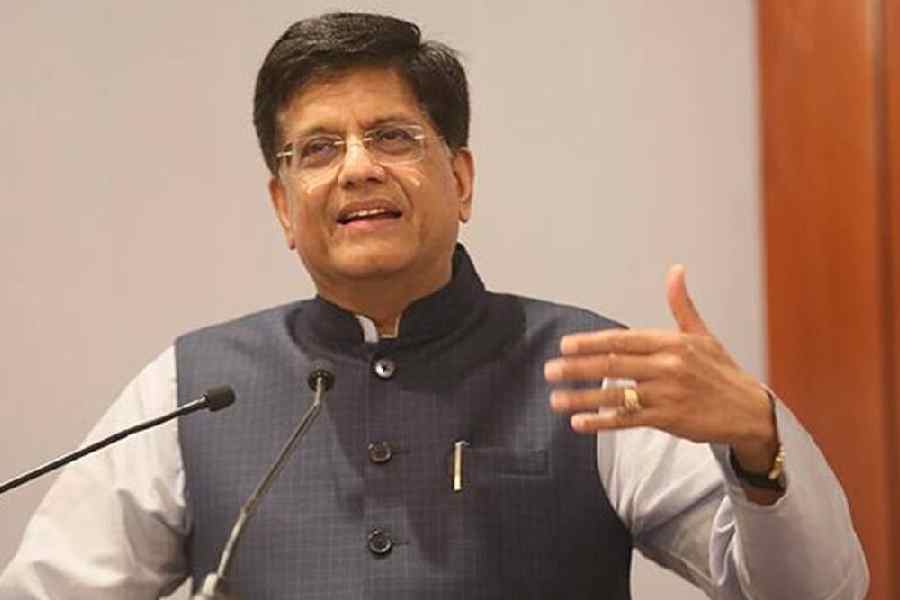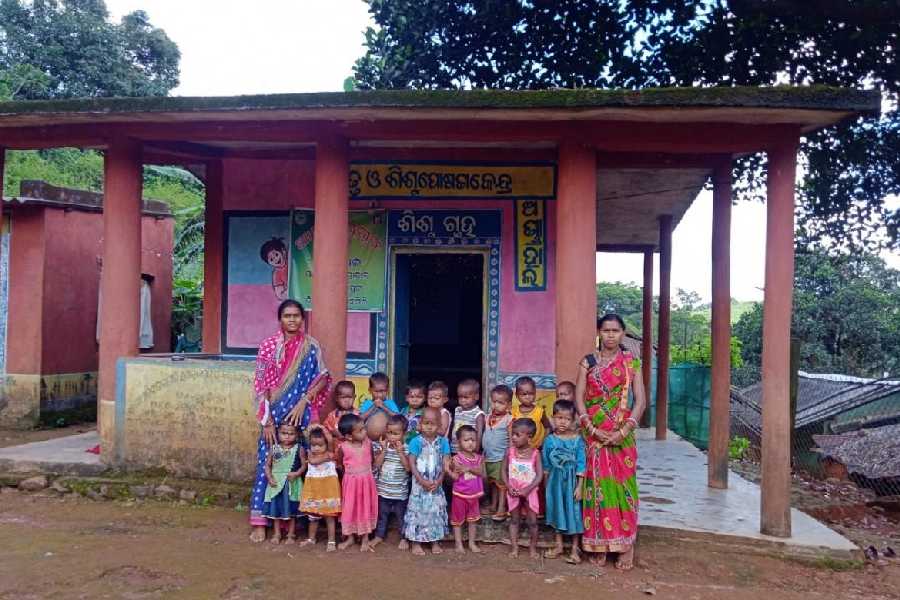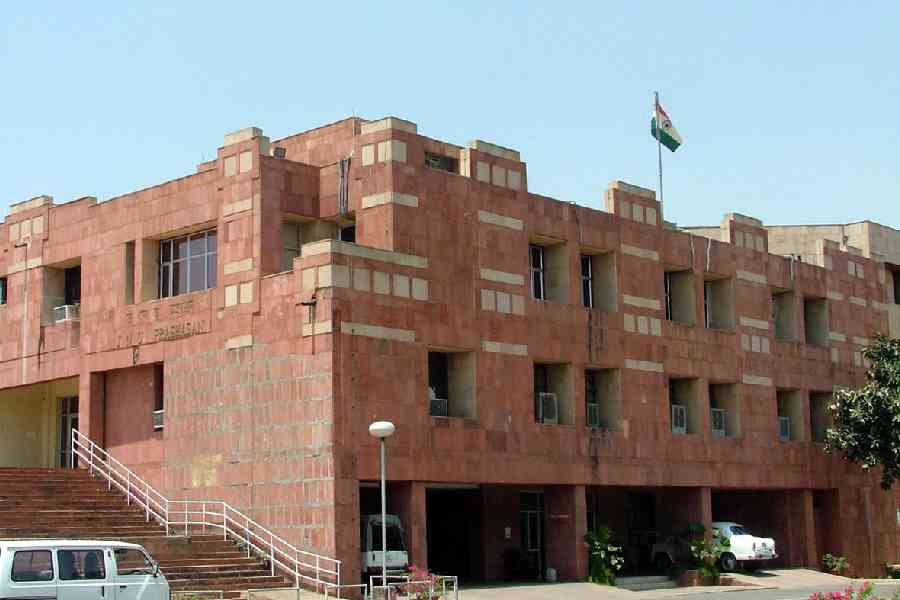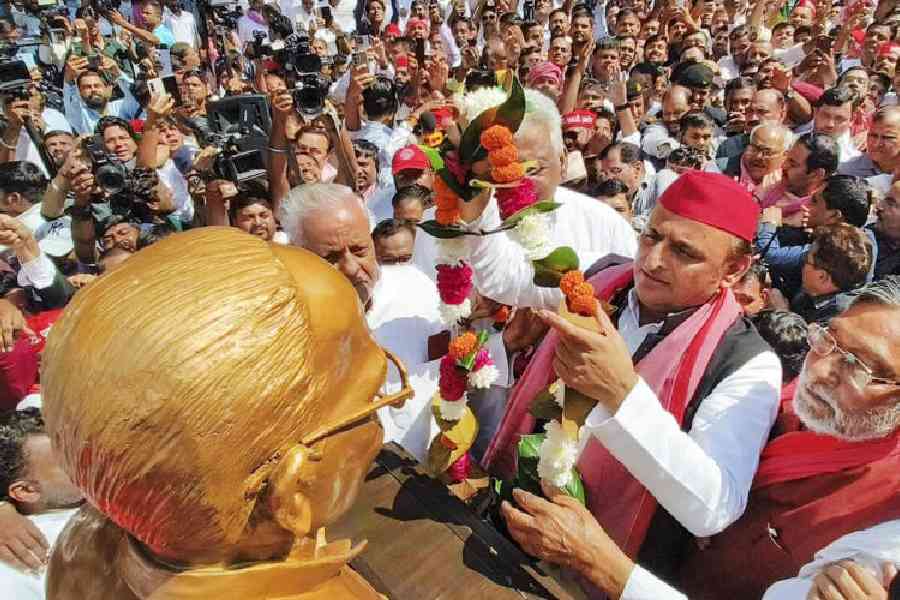It was a typical day at a field hospital for one doctor in Kerala’s capital, Thiruvananthapuram. Out of 80 patients who turned up for testing on Sunday, 78 tested positive. Even the other two had Omicron-like symptoms and the doctor reckons their tests had produced “false negative” results due to a problem in testing.
Kerala reported 51,570 new cases state-wide on Sunday and, even more alarmingly, an astonishing test positivity rate (TPR) of 49.98 – that means one out of two people is testing positive. With just three per cent of India’s population, the state is accounting for more than 14 per cent of Covid-19 cases.
Kerala has all along been the mystery state of the Covid-19 pandemic out-of-step with the rest of the nation. When numbers soared elsewhere, Kerala kept them under control. And when numbers fell in other parts of the country, Kerala’s shot through the roof. But doctors seeing the rush of patients believe that the actual number of people contracting Covid-19 is even higher. So many people are coming down with Omicron, people aren’t bothering to get tested and doctors aren’t insisting on seeing a positive test result. On January 25, Kerala’s daily case numbers peaked at 55,475.
Kerala’s TPR for the last seven days is a sky-high 47.6. No other place in the country, including Mumbai, is registering such stratospheric positive test levels. Since January 20, Kerala has been reporting upwards of 40,000 cases daily. (By contrast, Delhi’s caseload is running at around 3,700 daily while Mumbai is at about 1,200 cases). During the devastating Delta second wave, daily new cases in Kerala peaked at around 22,000.
Says a health expert: “The actual numbers are much beyond what’s being said. If you have symptoms now, you are assumed to have Omicron.” He estimates there could be around 100,000 cases daily, half of which are not being recorded. Of those cases being tested, 96 per cent are Omicron, doctors say. One person who fell sick reported that his 16-year-old daughter went to school briefly and picked up the infection there. He and his daughter tested positive and other people in the six-member household didn’t even bother to test when they developed mild symptoms. He says: “Most people stay at home and don’t get tested. So they’re not in the official records.”
There’s considerable debate about what’s causing the high case numbers which are far more elevated than anywhere else in the country. Everyone agrees that Kerala’s population density makes it difficult to contain Omicron which spreads three to five times faster than the deadly Delta virus that devastated the entire country in April-May of last year.
But experts say population density may not tell the whole story. The difference between Kerala and other states is that it’s crowded from one end to another and has a population density of 859 people per square kilometre. Nevertheless, Kerala’s density is far lower than jampacked urban areas like Mumbai which has an extraordinary 27,411 people per square kilometre or Chennai which has 25,000 people per square kilometre.
Beyond population density, there’s the fact that Covid-19 fatigue has overtaken many people who are tired of self-isolation rules, wearing masks and constantly applying hand sanitiser. Says the health expert: “In the first wave, people were very sensitive and were taking all precautions on their own. Now, even though the theatres and restaurants have shut, the crowds haven’t diminished.”
What other reasons could there be for Kerala’s Covid-19 patterns and the current extraordinary numbers? One possibility is that Kerala is highly connected both with the rest of India and the world. Kerala came out relatively unscathed after the first wave in mid-2020. But then many Malayalees living outside Kerala returned there both by train from other parts of India and from abroad – mainly the Gulf. This led to a situation where it was impossible to stop infected people from entering the state.
Besides all this, there’s the fact that the government has sharply stepped up testing. On January 17, it carried out 69,373 tests daily but that climbed to 115,357 on January 20. Since then, on all except two days, it’s conducted more than 100,000 tests daily. Normally, this should have brought down the TPR but Covid-19 appears to be so widespread that this hasn’t had any impact.
On Sunday in an effort to slow the virus’s spread, the government declared a one-day curfew around the state. It’s also divided the state’s districts into A, B and C categories depending on the number of cases. Currently, Kochi is far out in front with 62,957 active cases followed by Thiruvananthapuram which has 47,021. Districts with high case numbers are facing restrictions such as limiting attendance at weddings to 20 people.
Even though hospitalisations are much lower than during the Delta wave, the sharp rise in cases is increasing pressure on the healthcare system. Currently, there are 354,000 active cases in the state. However, the government insists there’s no shortage of hospital beds. Six days ago only 43.3 per cent of the 3,107 ICU beds were occupied and 13 per cent of the ventilators were in use. Helping keep hospitalisations low is the fact that 84 per cent of the population over 18 has received two vaccine doses while more than half a million over-sixties have received booster doses.
With the pandemic moving at a high speed, it’s expected that numbers will start to drop quite quickly. Experts predict that after the first week of February, the fresh daily caseload should start falling.
There’s also the matter that Kerala’s caseload profile has been out-of-step with the rest of India ever since the pandemic began. In early 2020, the state managed to keep cases low while the first wave was raging in most other parts of the country. When India’s second wave erupted it reached the state about six weeks later. Then, there was a three-month break before another surge in late August and cases numbers continued to be higher than much of the rest of the country. Now, with Omicron, cases have skyrocketed when they are falling in cities like Mumbai and Delhi.
In the earlier stages of the pandemic, the state took pride in its low death numbers. But the John Hopkins coronavirus tracker shows that Kerala has recorded 5,156 ( deaths in the past 28 days bringing its total number of deaths toq 53,191. (India’s official death toll is 494,091 though independent estimates suggest the number of Covid-19 deaths is well over three million and could be as high as six million, using the measure of “excess deaths” that involves comparing all deaths recorded with those expected to occur).
But around one-third of Kerala’s death toll involve “backlog” deaths, most of which occurred during the second wave, that were added to government records from compensation claims by families of the deceased. The state government says the addition of “extra deaths” reflects diligent record-keeping and changes by the Supreme Court defining any death within one month of testing positive as a Covid-19 death, raises Kerala’s case fatality rate to 0.9 per cent from 0.6 per cent, but it is still considerably below the national average of 1.3 per cent.
States such as Gujarat, which has a population of 65.5 million, has officially declared just 10,408 deaths from Covid though it has approved 68,400 coronavirus death compensation claims.










